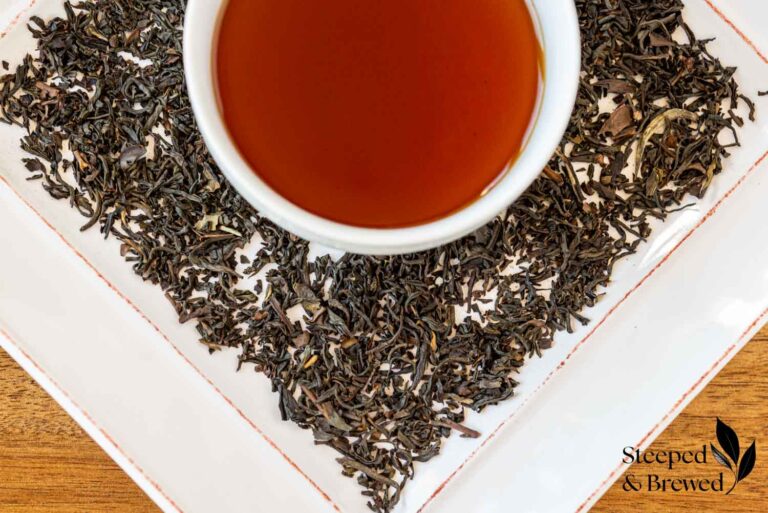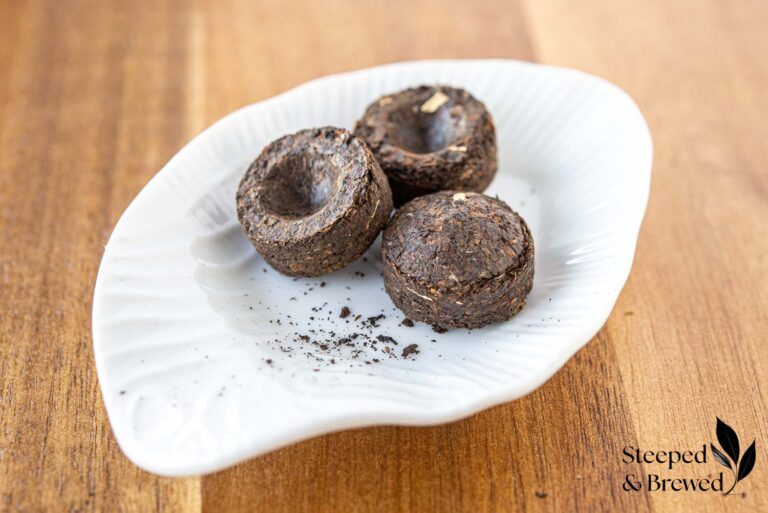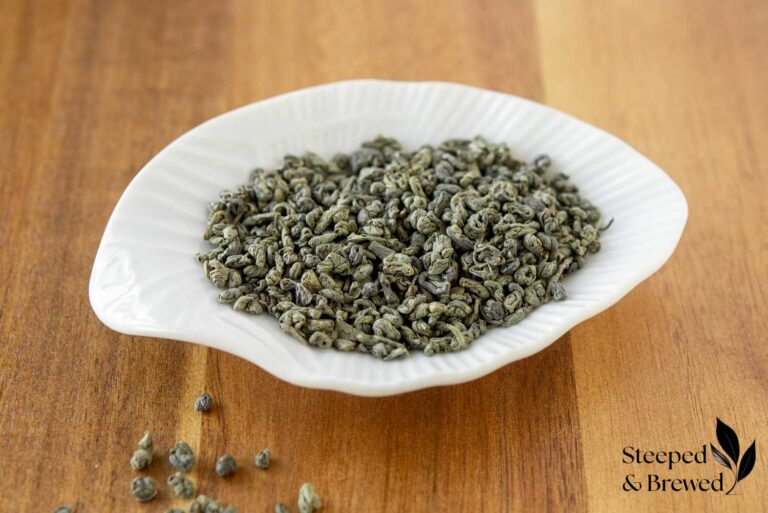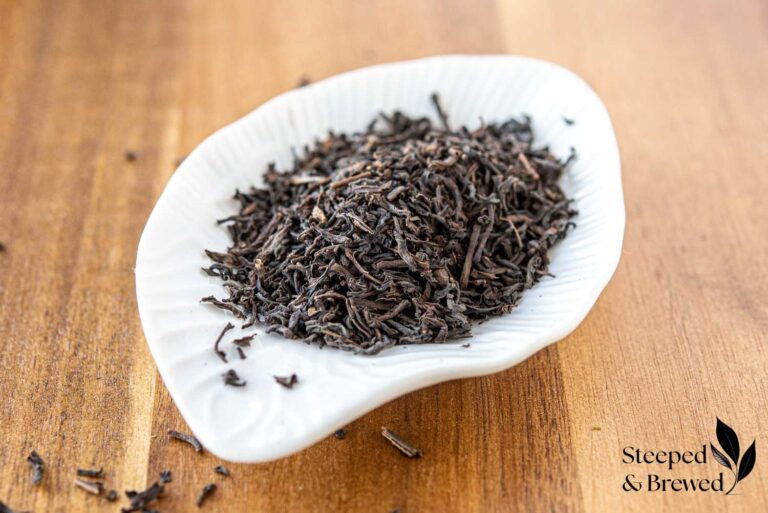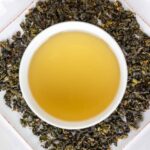This post may contain affiliate links. That means if you click on a link and make a purchase, I may make a small commission at no additional cost to you. Thank you for your support!
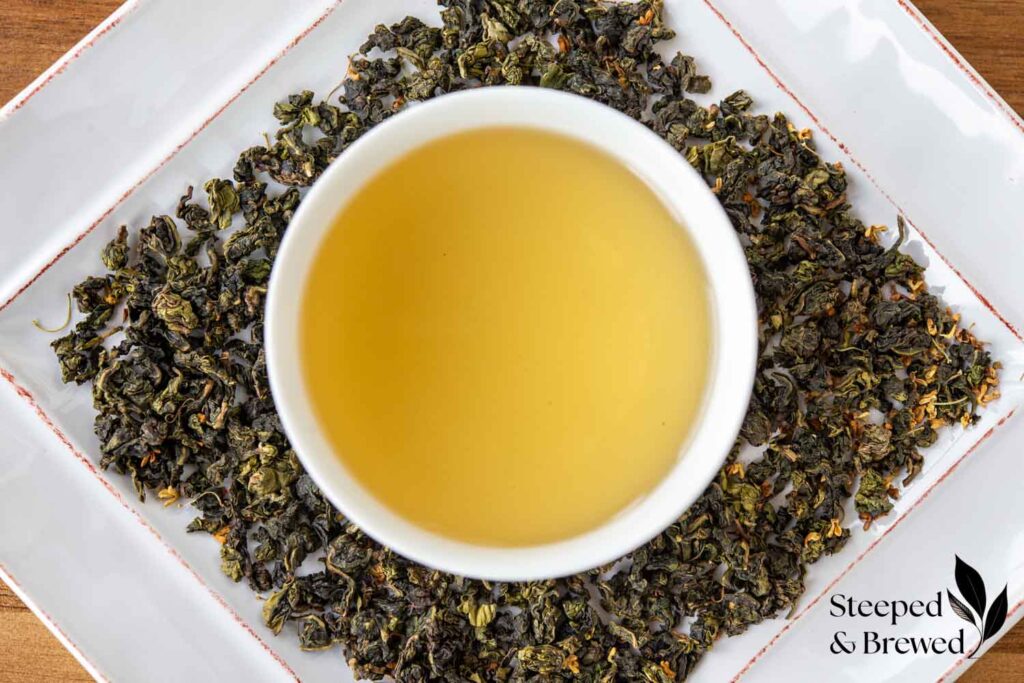
Hey everyone! Ready for a tea adventure? Let’s move beyond our regular routine of black or green tea and discover the exciting world of oolong. Although I’m no tea expert, I’ve been exploring oolong tea recently and can’t wait to share my discoveries with you. Let’s dive in!
What is oolong tea?
Oolong tea is a semi-oxidized tea. This simply means the tea leaves are exposed to air in a controlled environment until the desired level of oxidation occurs, which affects the final look and flavor of the tea leaves. The difference between oolong and green or black tea lies in this unique ‘semi-oxidized’ state. Green tea is unoxidized and black tea is fully oxidized, with oolong falling somewhere in between.
This middle ground gives it a particular profile that is a tasty mix of the grassiness of green tea and the robustness of black tea. Think of oolong tea as the golden middle child in the family of teas. Not as mild as green tea, and not as strong as black tea – it’s just right in between, offering a nice balance between the two.
Learn more about the different categories of tea in my article, “What’s In Your Cup: An Easy Guide To The 6 Main Types Of Tea“.
Oolong tea history
Oolong originates in the provinces of Fujian and Guangdong. Fujian is essentially recognized as the cradle of oolong tea based on historical texts and production practices.
The exact origin of oolong tea is steeped in myth and mystery, but one enchanting tale tells of a tea farmer in the Wuyi Mountains of Fujian who observed a black snake circling his tea bushes. Fearing the snake, he abandoned the bushes for several days. When he gathered the courage to return, he found the leaves had oxidized in the sun, leading to the birth of oolong tea. While it’s a captivating story, the reality of how oolong tea came to be is likely a culmination of centuries of tea cultivation and processing innovation.
Today, the legacy of oolong tea continues to live on in the tea plantations spreading across the different regions of China and Taiwan. While methods of cultivation and processing may have evolved, the reverence and meticulous attention to the art of oolong tea production remain unchanged, ensuring the preservation of this delightful tea experience.
Fun bit of side trivia – the name “oolong” translates to “black dragon” in Chinese.
How is oolong tea produced?
Oolong tea production is an art that requires detailed precision and attention. After hand-picking the leaves, the first stage of the production process involves wilting the leaves in direct sunlight. This process is known as “withering”, and it helps to partially evaporate the water content in the leaves.
Next, comes agitating or “shaking,” which starts the oxidation process. The leaves undergo partial oxidation under carefully controlled temperature and humidity conditions. It’s the level of oxidation that significantly determines the character of the final tea.
As soon as the desired level of oxidation is reached, the leaves are then “fixed” or “fired” using heat to stop the oxidation process. Following this, the leaves go through the “rolling” and “shaping” stage where they are rolled into their distinctive shapes, such as the traditional small balls or twisted strands. Finally, the leaves are dried and then sometimes roasted to intensify and add unique, enchanting, toasty flavors to the tea.
Every step in this process needs to be carefully managed by experienced tea masters to produce the intricate flavor profiles that oolong tea is famous for. It’s not just a process, it’s a craft, and each stage of production draws out a new layer of depth and complexity in this exceptional type of tea.
Different types of oolong tea
There are many types of oolong tea, each unique in flavor, color, and aroma, thanks to various factors such as origin, climate, cultivation, and processing techniques. The oxidation level significantly influences an oolong’s overall character. There is a wide spectrum of oolong tea oxidation levels, starting from green oolong (lightly oxidized) with a light, floral scent, and a refreshing taste, followed by the moderately oxidized, amber-hued oolong teas that offer a balance between fresh and robust flavors. At the other end of the spectrum are heavily oxidized oolongs, known for their rich, velvety bodies and woodsy undertones. Each level of oxidation brings out different flavor complexities, making each oolong unique.
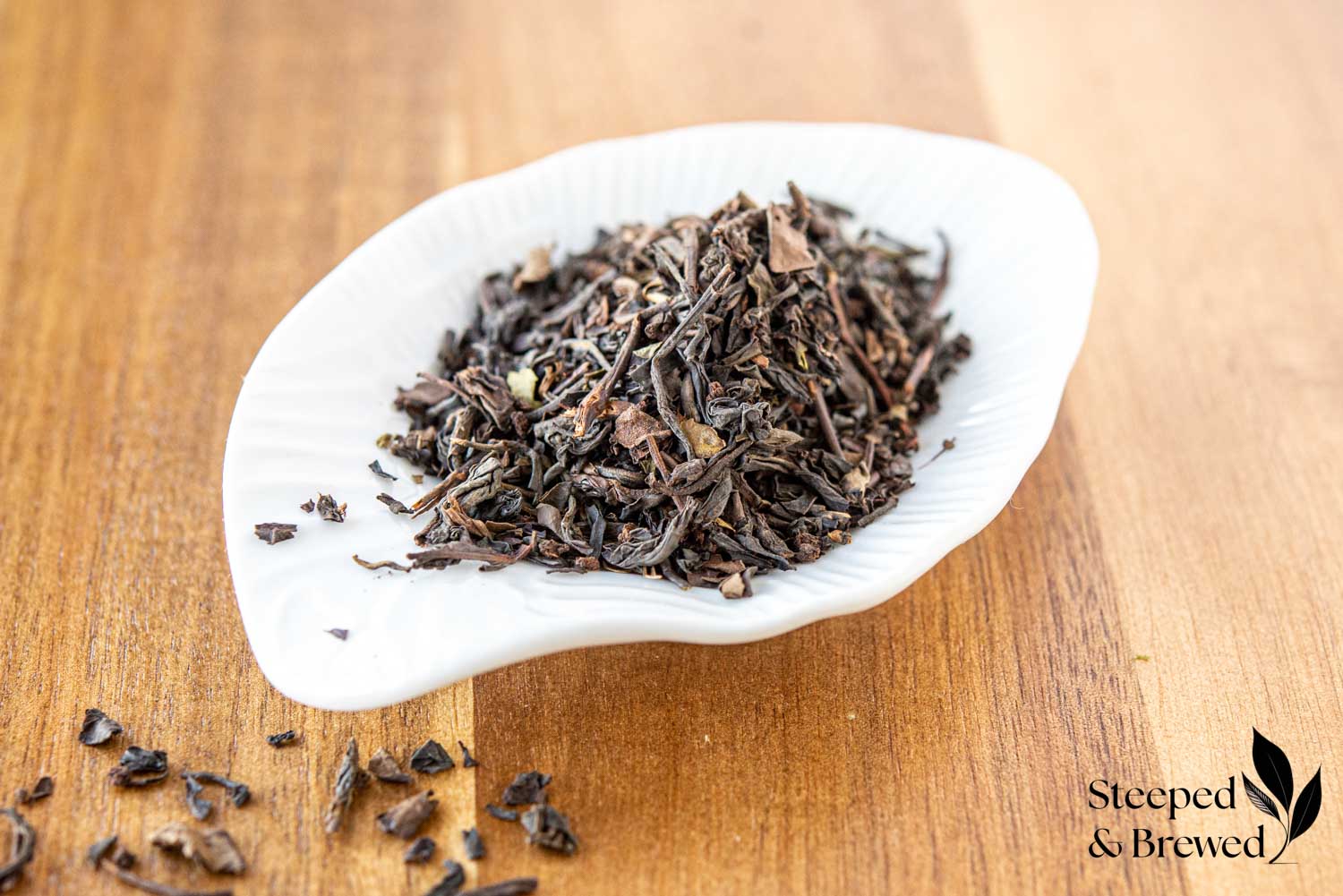
The Aroma and Taste of Oolong Tea
Oolong tea has a wide array of aromas and flavors, ranging from the fresh, vegetal characteristics of green tea to the bold, dark traits of black tea. Its aroma can remind you of flowers, fruits, or even freshly baked cookies. When sipped, Oolong tea often presents a smooth, rich flavor profile that can range from light, floral notes typical of lightly oxidized oolongs (often compared to green tea), to sweet, fruity tones found in more heavily oxidized teas. It can also span the spectrum from buttery, vanilla-like notes to woody or roasted undertones.
Brewing Oolong Tea: Preparation Tips and Techniques
Oolong tea can be brewed in various styles, including the traditional Gongfu method and the more accessible Western style. In upcoming articles, we will delve deeper into the intriguing Gongfu approach. But for today, let’s explore how to brew oolong tea in the Western style. The Western style of brewing oolong tea is the most straightforward and the perfect option for an everyday cup.
The method is simple – about 4 grams (about 1 to 1 1/2 teaspoons) of tea for every 8 ounces of boiling water, steeped for 3 to 4 minutes, adjusting the volume of tea and steeping time to your taste.
To brew oolong tea in the Western style, follow these steps:
- Heat fresh water to a temperature range of 195°F-212°F (90°C – 100°C). The water temperature is dependent on the oxidation level of your oolong tea leaves. Lighter oolongs with green tea characteristics are best brewed at lower temperatures while darker, more robust oolongs should be brewed at higher temperatures, even up to the point of boiling.
- Preheat your mug or teapot with hot water, then discard the water.
- Using the ration of 4 grams (about 1 to 1 1/2 teaspoons) of loose leaf oolong to 8 ounces of water, add the tea leaves to a teapot or infuser with plenty of room for the leaves to move around and unfurl. Avoid the little tea ball infusers – they don’t provide enough room for the leaves to do their thing.
- Once the water reaches the ideal temperature, pour it over the tea leaves.
- For oolong tea, a typical steeping time is between 3 to 4 minutes, depending on your taste.
- Strain the tea and enjoy!
- Bonus – oolong tea leaves can be steeped multiple times. Experiment with increasing the steeping times on subsequent re-steeps to find your perfect cup.
What’s in my cup

Harney & Sons Formosa Oolong, 3oz Tin of Loose Tea
Buy Now →Frequently Asked Questions
How do I store oolong tea?
To keep your oolong tea fresh and as aromatic as the day you bought it, store your tea leaves in a cool, dry, dark spot. Avoid locations with strong odors as the tea may absorb them. The best option is an airtight container, which can minimize exposure to air and moisture. Be mindful to use your tea within a year, as aging doesn’t usually enhance the flavor of oolong tea.
What should I look for when buying oolong tea?
Source your oolong tea from reputable vendors who can provide information about the tea’s origin and processing. As for the tea itself, it should have a pleasing, fresh aroma. The leaves should be intact, with a vivid color that matches the type of oolong you’re purchasing.
Does oolong tea contain caffeine?
Yes, it does! Like all true teas, oolong contains caffeine, making it a perfect morning or afternoon pick-me-up.
Can oolong tea be re-steeped?
Yes, oolong tea leaves are known for their ability to be re-steeped, allowing you to extract a variety of flavors and aromas with each steeping. Experiment with increasing the steeping times on subsequent re-steeps to find your perfect cup of tea.


